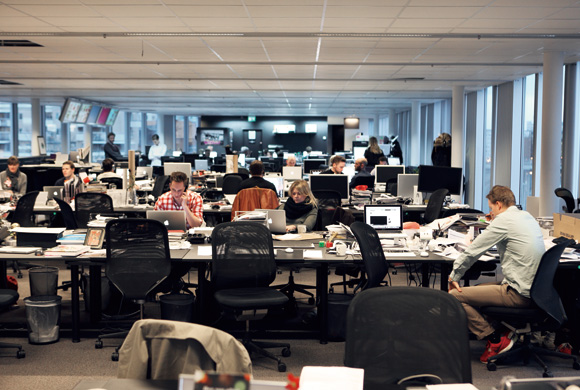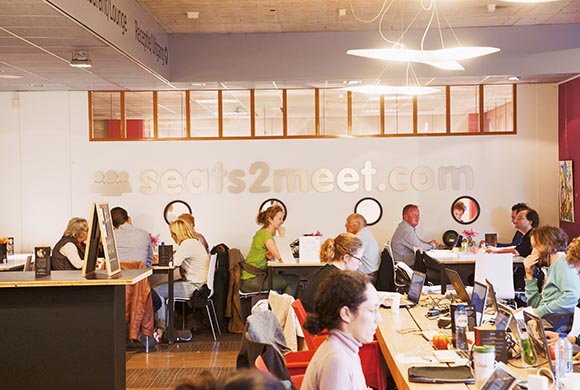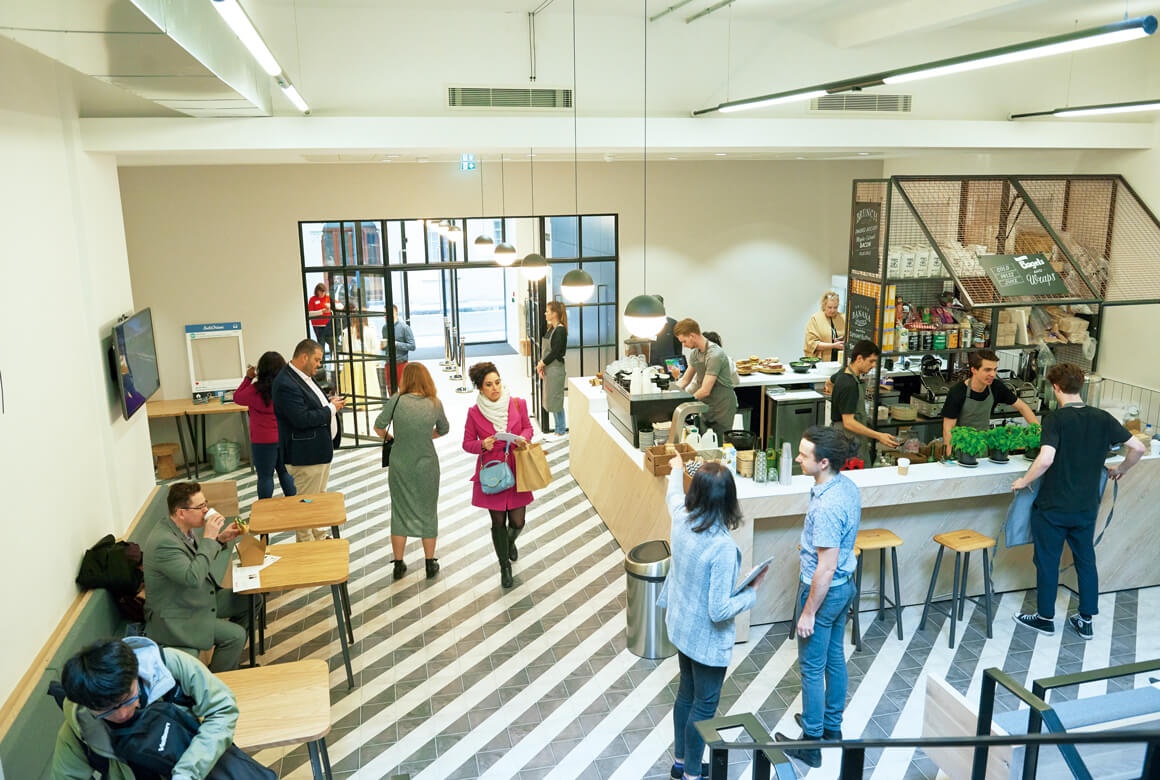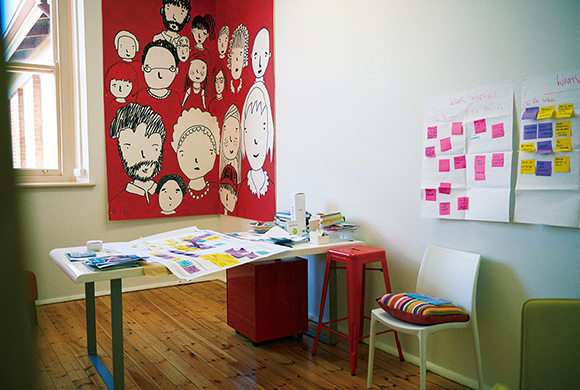Workplace
Dec. 2, 2019
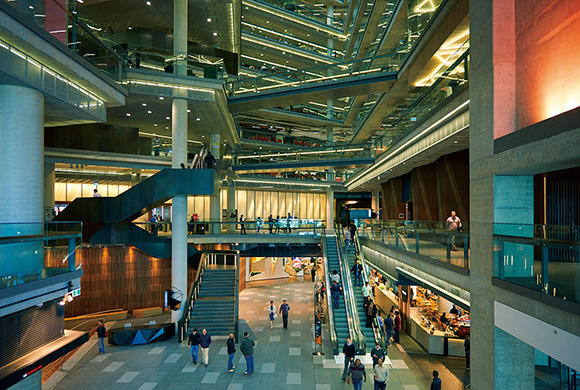
Radically changing traditional banks
The Largest Australian Bank becomes an open financial institution
[NAB] Melbourne, Australia
An open atmosphere is not what you would imagine to find in a financial institution. The first floor has a public cafe, a conference room, and co-working space available to member companies. Walls separating customers from workers have been removed as much as possible, so when you look up, you can see activity on each floor.
“The customers are most important to us,” says Roger Macmorran. “The aim was to create an environment where customers feel at ease. We wanted to create an open space and avoid the image of a bank that doesn’t understand the customer. The design allows customers to feel and understand us when they enter the building, and it also allows workers to approach customers. The idea that we’re here for the customer is reinforced daily.”
National Australia Bank has always been customer-centered, so it’s hard to say that this is the result of the new office building. The bigger issues are the pursuit of efficiency and changing the operational model. The challenge is to create a feeling of freedom and openness for all 6,000 workers crowded into 63,000㎡ through the optimal use of space.
“We want to provide teams with a working enviroment that goes beyond just giving freedom to the individual,” according to Mr. Macmorran.
In 2009, the bank officially introduced Real Time Working (RTW) in order to facilitate faster decision making, casual meetings and efficient collaborations, with personal booths, meeting spaces, and diverse workplaces on each floor.

The exterior of the NAB head office building. Just a minute on foot from Southern Cross Station, the building’s triangle motif in the shape of the land it was built on conveys an edgy image. To the left in the photo is the Medibank head office.
Established: 1893
Revenue: Approximately AUD 19.248 billion (2014)
Net Profit: Approximately AUD 5.295 billion (2014)
Employees: 42,853 (2014)
https://www.nab.com.au

Central atrium. The central peninsula space (right) is where cross-functional members gather.
In 2013, various office locations were consolidated into a new office building, where activity time was included into the workspace for smooth change management: long (over 3 hours), short (1 to 3 hours), and drop-in (less than 1 hour). So, for example, the bench by the kitchen is recommended for a friendly chat of less than an hour.
“Although it’s not clearly stated, we intervene when we see a mismatch in how and where a worker works. Education is important, and it’s not realistic to expect everyone to immediately adapt to a new environment. Change management is an ongoing issue,” says Mr. Macmorran.
What’s important is that everyone knows that RTW is about creating team space. Each floor has eight spaces called Hubs where teams can gather. The sofas in the center are for meetings, while the progress of a project can be shared on the bulletin board. Rooms on each floor can be used for projects lasting from several weeks to a few months.
“Even though we tell workers that they can move around, everyone likes to have their own space,” says Mr. Macmorran. By offering them spaces for teams, they can maintain individual freedom while maintaining teamwork.

Personal booths. Used to do independent work.

Kitchenettes are available throughout the office.
NAB is on the leading edge of promoting wellbeing. Every square meter of the building feels fresh because of the abundant natural light and plants. The low-cost space with unfinished ceilings and walls contributes to a feeling of spaciousness.
“This office is as spacious as a studio,” says Mr. Macmorran, and he’s not exaggerating. The chilled beam system, the largest type in the world, continuously provides fresh air with year-round heating and air conditioning, while reducing energy consumption.
The purpose of locating the office only 100 meters from Southern Cross Station is clear.
“We wanted our workers to drive less and use the public transportation more,” says Mr. Macmorran. “Driving three hours every day has a huge negative impact on health, and providing a workplace 45 seconds on foot from the station will dramatically improve their lives.”
The new National Australia Bank office building does a good job of changing the rigid bank workstyle. A company that easily adapts to organizational changes can better adapt to market changes, according to Mr. Macmorran. “Now is not the time to judge if the new office is a success. We’ll have to wait for 15 more years.”
Consultancy for Work Style: Calder Consultants Interior
Design: Woods Bagot
Architect: Woods Bagot
From WORKSIGHT 08(2015.10)

A nursery immediately on the second floor is available for the children of workers.

Roger Macmorran
Managing Director,
Calder Macmorran















